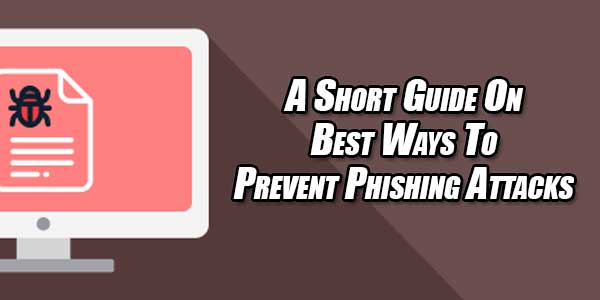
Phishing sounds like fishing. Right?
Well, both have a similar meaning to some extent. But here we will talk about phishing.
Fishing means catching the fishes by luring them with bait.
Phishing is the same thing, but with a slight difference.
While it doesn’t lure the fishes, it tricks web users into fraudulent activity—just like trapping the fishes.
Let’s dig deeper.
Phishing is a malicious practice to steal personal information, login credentials, and credit card numbers from an individual by trapping them through offers or posing as a trustable entity. For example, an attacker will send you an email claiming to be from recognized sources and ask you to provide your account or credit card information.
According to one report, nearly 80% of all malware attack comes from phishing. Sadly, 97% of people, according to another study, are not able to recognize a phishing attack. And phishing scams cost American business 500 USD million a year.
Therefore, keep your website safe from such malicious attacks. All you need is to practice these things…
Table of Contents
1.) Use SSL Certificate:
SSL certificates provide critical security, data integrity and privacy for both your website and user’s personal information. Having an SSL certificate ensures both you and your customer’s information is properly encrypted and can’t be easily decoded by anyone. No wonder most customers like to visit SSL secured websites. If a site protected by SSL, then it begins with “https” instead of “HTTP”.
2.) Use Strong FTP Passwords:
FTP stands for File Transfer Protocol. As the name suggests, it allows you to send or receive files (transferring) over the internet. For example, you can share your files with other users over the Internet by uploading it through your computer. Make sure to use strong passwords for your FTP. Otherwise, it would be a cakewalk for a hacker to access your data.
3.) Check Your Account For Malicious Files Or Folders:
Make sure your folders and files are server related files with an extension like phpinfo.php file. If you notice a lot of text files in a folder that you hadn’t seen the day before, it is an indication that your site is under threat. Contact your web hosting vendor as soon as possible in case of having such folders or files with unknown origin.
4.) Remove The Signs Of Phishing:
Web Hosting Hub plays an important role to detect phishing attempts from your servers. In some cases, you are required to remove the files on your own as you will be notified directly.

5.) Block Access To Restricted Sites:
Not all websites are safe to visit. Some websites contain malicious content to gain access to your data. These sites lure visitors by showing them porn content or offer to win attractive prizes.
But how will you stop your employees from clicking such site links? You should restrict those sites from being able to be opened over your network. It can be done by making a few changes in your network. Also, stay updated with the list of blocked sites in your nation.
6.) Set The Number Of Login Attempts:
Generally, a hacker is likely to make several attempts to crack your website password. He just needs one successful attempt to make it into your data. So, reduce the number of login attempts to keep such risk at a bay.
By default, WordPress lets users try different passwords as many times as they want. This feature is known as a brute force attack. You need to install the Login Lockdown plugin to restrict several login retries. If the number of failed attempts exceed the login retries limit, then your site will lock the user’s IP address for a temporary period (based on your settings).
7.) Change Admin Login URL:
Does your website login page open up by putting wp-admin at the end of the URL? If so, you are giving an easy route to the hackers. This minor mistake can lead to a huge setback to your website.
Therefore, make it secure by changing this to something less predictable like wp-login.123? ordu_login.php etc.
8.) Encrypt Your Wireless Network:
Anyone can use your wireless network without your permission, no matter if they are outside your office or living in the building next to you.
It will not only increase your Internet bill but also allows hackers to access your data using your Wi-network. In such a scenario, you need to encrypt your Wi-Fi. It is very simple to do.
Just go to your router’s settings and find security options. You will find WEP, WPA, and WPA2 which are encryption methods. Choose the one and enable it.
In this way, these simple yet effective things help you save your website from phishing. Stay Safe. Stay Aware.

 About the Author:
About the Author:
















Be the first to write a comment.